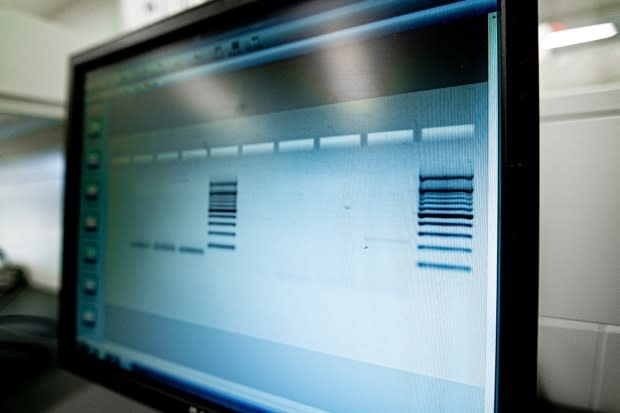No, the new coronavirus wasn't created in a lab, scientists say
One of the most persistent and widespread pieces of disinformation during the COVID-19 pandemic has been the conspiracy theory that the novel coronavirus that causes the disease was created in a lab — and was let loose either by accident or on purpose by some nefarious actor.
The theory not only lives on social media and internet message boards pushing conspiracy theories but has been publicly floated by politicians.
On Sunday, Iran's Supreme Leader Ayatollah Ali Khamenei, raised the idea that SARS-CoV-2, the virus that causes COVID-19, was created by the U.S. government.
According to Al Jazeera, Khamenei said he didn't know how real the theory was, but that he didn't trust a recent U.S. offer of help for people sick with coronavirus in Iran — positing that the virus had actually been made to target Iranians.
A new paper from an international team of scientists recently published in the research journal Nature Medicine found that the coronavirus that causes COVID-19 was not, in fact, genetically engineered.
The paper, entitled "The proximal origin of SARS-CoV-2," was published on March 17, and was produced by a five-person team that included scientists at Columbia University, the University of Edinburgh, Scripps Research Institute in California and the University of Sydney.
It compared the genetic data of the new virus to other coronaviruses and found that the way it binds to human cells suggests it evolved naturally. The research found that the new virus is very good at binding to the cellular receptor ACE2, which is usually involved in regulating blood pressure.
"Nature still can do a better job at designing a virus than any person could," said Robert Garry, a professor of microbiology and immunology at Tulane University in New Orleans and the paper's senior author.
Prominent figures, states boost conspiracy theory
Despite such scientific evidence, conspiracy theories have proved irresistible for some politicians, often serving to help push foreign-policy agendas. Iran's Supreme Leader is only the latest high-profile example.

In January, rumours falsely claimed that the virus was stolen from the National Microbiology Lab in Winnipeg by two Chinese scientists, a husband-and-wife team. The rumours appeared to be exaggerations of a CBC story from last July, about two researchers who were escorted out of the lab amid an RCMP investigation. Public Health Canada said there was no link between the researchers and the new coronavirus outbreak.
"Nature still can do a better job at designing a virus than any person could." - Robert Garry, Tulane University
In February, the New York Times reported that U.S. Republican Sen. Tom Cotton boosted the rumour that China had created the virus in a high-security lab in Wuhan, the epicentre of the COVID-19 outbreak.
Cotton appeared on Fox News and said that while he had no evidence the virus had started in a Wuhan lab, he questioned how truthful the Chinese government was being. He later changed his mind, according to the Times.
That same month, U.S. officials said Russia was behind a disinformation campaign on social media that included efforts to push a conspiracy theory that the virus was created in the United States.
In March, China appeared to turn the tables when a spokesperson for the ministry of foreign affairs claimed the U.S. government was hiding what it knew about the origins of the virus. In this scenario, the virus was supposedly brought to Wuhan by the U.S. Army last October.
What researchers found
Because researchers in China sequenced the genome of the SARS-CoV-2 virus and made it publicly available, Garry and his co-authors were able to use that data for their work.
They were able to compare SARS-CoV-2 to other coronaviruses and look for signs of manipulation.
He said that if it had been manipulated, "one of the major things is ... that you would expect it would have a closer relationship to some known viruses." Garry explained that while there are some similar coronaviruses, the one that is closest genetically to SARS-CoV-2 wasn't discovered until after this outbreak started.
"[Scientists] went back in their tissue banks and things, and started looking for these coronaviruses, and they found one in a bat that's fairly close, but [it has] some major differences in some important parts of the genome," he said.

Another thing the team looked for was evidence of what Garry called "cloning artifacts."
If you are engineering a virus, "you very often have to cut things up into pieces and then splice them back together. I suppose if you were, you know, a very clever mad scientist like you might see in a comic book somewhere, you can maybe figure out how to do it and not be detected, but it's not that easy," he said.
"You can usually see where something has been cobbled together, and there just aren't any signs of that in this virus," he said.
Where the virus came from
Garry said the SARS-CoV2 virus is similar to a bat virus, which makes bats the mostly likely source of the current virus, though that has yet to be confirmed.
WATCH | Professor Robert Garry explains the origins of the novel coronavirus
He and his collaborators looked at two scenarios in which the virus jumped from animals to people.
In the first scenario, the virus circulates and evolves in animal hosts before jumping to humans. This could also mean that the virus passed from a bat to another species, like a pangolin, before being transmitted to humans.
In the second scenario, a version of the virus circulates in animals and then is transmitted to people, where it evolves to become a virus that can cause illness in humans.
The reason this matters is because if the virus evolved in people to cause illness, that means that if the virus again transfers from animals to people in the future, it will be less likely to cause outbreaks of sickness without the same mutations.
Garry said one thing researchers are considering is that an early version of the virus could have been circulating for years or even decades.
SARS-CoV-2 "is pretty new, but it's very likely that there was an immediate progenitor to that virus, maybe just missing a few of the key genetic changes," he said, and that once those changes evolved, that's when people began to get sick.
CBC's COVID-Check unit is here to help you sift through the noise and get to the truth. If there is something you want us to check out and verify, contact us at covidcheck@cbc.ca.


